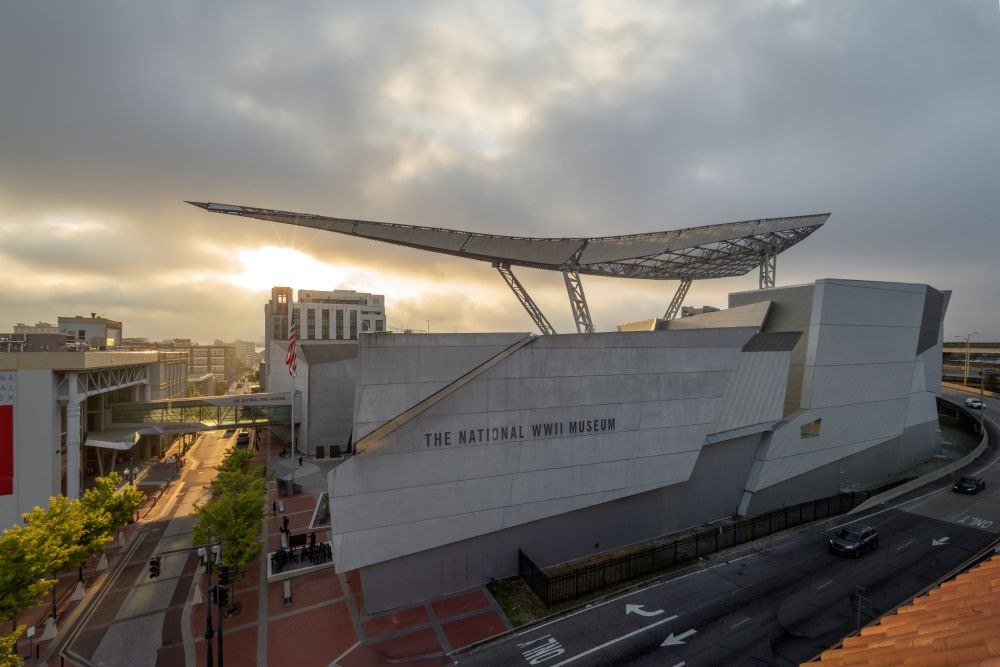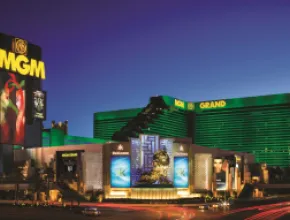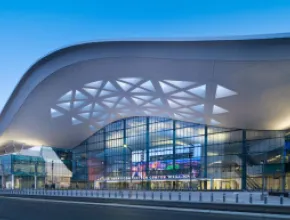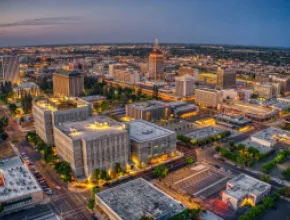You can check off most typical New Orleans bucket-list items within the city’s iconic French Quarter, where beignets from Cafe Du Monde can be enjoyed in front of St. Louis Cathedral during the day and Sazeracs can be sipped on Bourbon Street beneath green, purple and yellow lights at night.
Many groups gathering for meetings and events in New Orleans call this historic area of the city home, as it puts them near the New Orleans Ernest N. Morial Convention Center, with 1.1 million square feet of exhibit space, as well as numerous top-tier hotels (including The Royal Sonesta New Orleans, where we’ll be hosting our Meetings Today LIVE! South hosted-buyer event November 16-19!).
Peeling back the layers of New Orleans beyond the French Quarter, though, reveals to meeting planners and attendees alike a new type of NOLA experience—one that is authentic, rooted in the local, a bit more nuanced and memorably meaningful.
Here are four “hidden gem” event venues in New Orleans that will take your meeting beyond the Big Easy basics and introduce an entirely new side of the city to your group.
[Learn More About Meetings Today LIVE! South in New Orleans!]
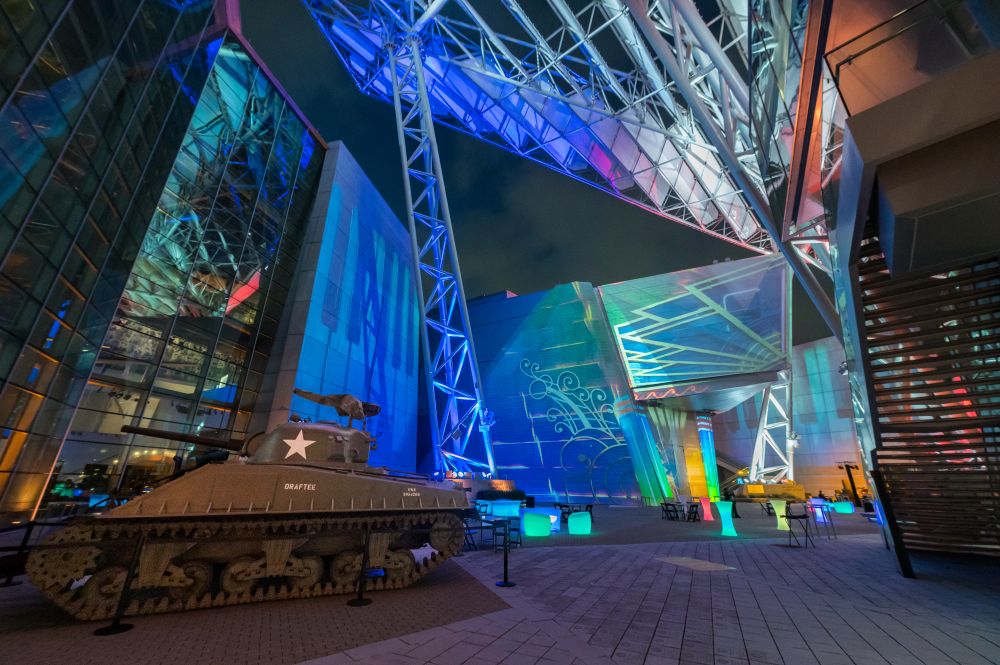
The National WWII Museum
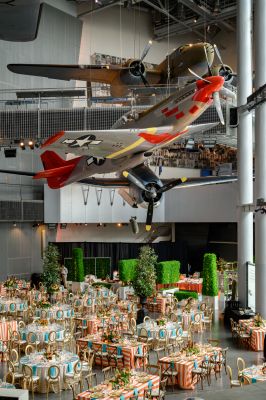
“The No. 1 attraction in New Orleans,” according to Senior Sales Manager Tyler Ginsberg and Tripadvisor, The National WWII Museum is located on Magazine Street in New Orleans’ Central Business District and welcomes hundreds of thousands of visitors annually. Opened in 2000 as The National D-Day Museum and featuring one building with a gallery exploring the world-changing Normandy landings of June 6, 1944, the museum was designated by Congress as the official WWII museum of the United States in 2004 and has since expanded into a seven-acre campus housing seven pavilions as well as The Higgins Hotel New Orleans, a 230-room Curio Collection by Hilton property named after the amphibious landing craft that literally turned the tide of the war.
“The National WWII Museum is here in New Orleans because the city actually played a huge role in helping win the war,” Ginsberg said. “Andrew Higgins, who was a local boat builder, designed the landing craft that brought the Allied troops to shore during major invasions like D-Day. His company, Higgins Industries, started with small work boats that were designed for the bayous, but during the war, it quickly grew into a massive operation with seven plants and 20,000 workers right here in New Orleans, and of the 13,000 Higgins boats used in the war, over 9,000 were built in the city.
“General Dwight D. Eisenhower has a famous quote saying, ‘Andrew Higgins is the man who won the war for us,’” Ginsberg continued. “So, that’s why The National WWII Museum is here in New Orleans.”
Not only is The National WWII Museum a world-class attraction, it’s also a world-class event venue, offering a variety of spaces for groups of all sizes, from boardrooms for up to 24 guests to pavilions for up to 1,000.
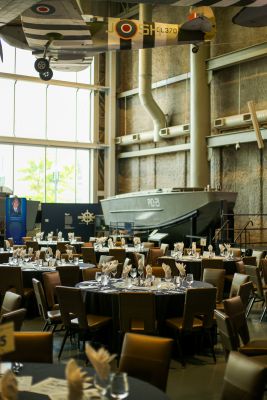
“We have so many spaces at the museum,” Ginsberg said. “A lot of people are familiar with the US Freedom Pavilion: The Boeing Center, where we have all the planes hanging from the ceiling. That’s really our flagship event space. That capacity is 600 for a seated dinner, 1,000 for reception. It’s a very large space.
“The Louisiana Memorial Pavilion, which is our original building, is also a major event space for us,” he added. “The capacity there is 260 seated and 600 for reception, and then we also have eight other meeting spaces of varying sizes that can be used for private events, ranging from a small, private dining room with a capacity of about 28 all the way up to our period dinner theater with a capacity of 268.”
One of the reasons the museum is a “hidden gem,” Ginsberg said, is because of the smaller event spaces it offers that people are less familiar with. Some of his personal favorites live in the Hall of Democracy, including the Madlyn and Paul Hilliard Research Library, which houses the museum’s curated collection of literature, histories and works from and about the war, and can accommodate up to 100 theater-style.
Another reason why Ginsberg believes The National WWII Museum is a “hidden gem” is the flexibility and creativity it provides that allows every unique group an experience unique to them.
“We have a lot of great spaces, but the ability to customize the experience takes it to a different dimension,” Ginsberg said. “It’s something you’re not going to get anywhere else, and being able to incorporate and work together with historians tying your company’s involvement to World War II, including educational aspects like a historian lecture, guided tour, artifact presentation…It really makes for a one-of-a-kind meeting.”
[Related: 5 Historic Properties in New Orleans and Baton Rouge Perfect for Meetings]
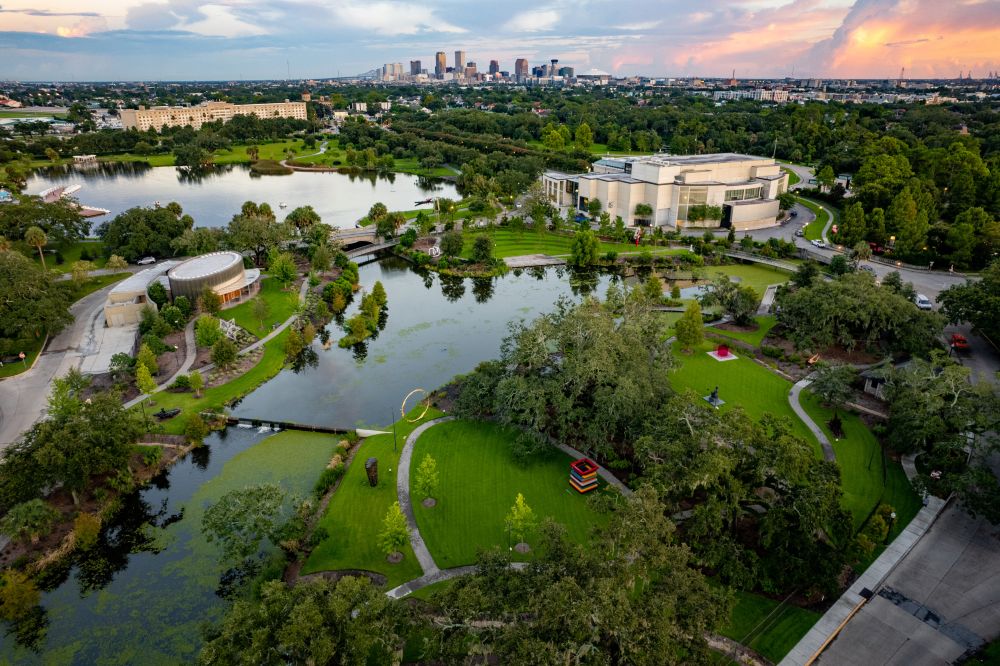
New Orleans City Park
About 15 minutes from downtown New Orleans sits a 1,300-acre public park that’s provided the community with access to an abundance of natural and cultural resources for over 170 years: New Orleans City Park. Stretching one mile wide and three miles long, City Park is home to the New Orleans Botanical Garden; Couturie Forest and Arboretum; New Orleans Museum of Art; Louisiana Children’s Museum; and the largest grove of mature live oaks in the world. (Some are nearly 800 years old!)
“We’re one of the oldest and largest urban parks in the country,” said Casie Duplechain, chief external relations officer for City Park Conservancy. “We have five times the visitors of all state parks in Louisiana and the largest collection of live oaks in the world, so, especially for people who are coming to New Orleans either for a visit or a conference, they can really get a taste of our natural fauna and landscape right here in the city.”
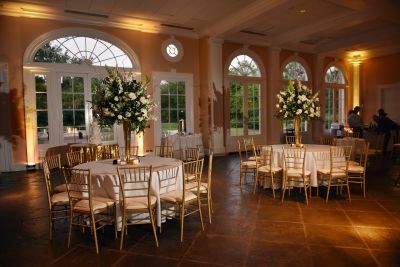
In addition to its natural beauty, City Park also offers a mix of cultural experiences and modern attractions.
“We have everything from an amusement park to a botanical garden, to sports fields, to horse stables, to walking paths,” Duplechain said. “An art museum, a children’s museum, two golf courses, two stadiums…I’m looking at the map because there really is that much! There’s something for everyone, no matter what you like and don’t like. It’s a place where people come to be alone, to build community, to recreate—to just be.”
New Orleans City Park offers something for every group, too. With a multitude of different venues suitable for a range of events and gatherings of all sizes, City Park is a “hidden gem” with hidden gems of its own.
“Our most popular venue is the Pavilion of the Two Sisters, which is in the New Orleans Botanical Garden,” Duplechain said. “It’s just a beautiful space. It seats up to 350 for dinner, 400 for receptions, and then in addition to the Pavilion inside the Botanical Garden, we also have smaller spaces that could be good for lectures or smaller meetings, which are in our Garden Study Center, and then we have our Lath House, which is directly adjacent to Garden Study Center and a little bit more open-air.”
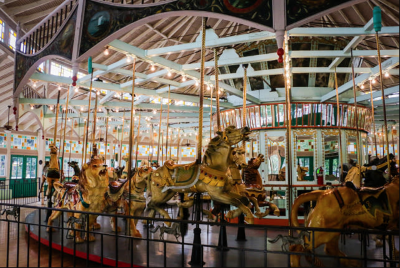
Additional venues in New Orleans City Park include Festival Grounds, offering 50 acres of green space; Peristyle, a Grecian-style open-air pavilion overlooking Bayou Metairie; and the Reunion Shelter, which sits on the edge of Festival Grounds and has a capacity of 500.
Add an element of surprise and delight to your meeting in City Park by taking advantage of its roller coaster or historic wooden carousel, one of about 100 left in the country, that’s been a staple in the park since the early 1900s.
“We also have miniature golf at City Putt, which is two 18-hole courses, a Louisiana-themed course and a New Orleans-themed course, and we do corporate buyouts for that,” Duplechain said. “And we have Cafe Du Monde in the park, and above it we actually have a rental facility called Parkview Terrace, and there’s some good synergy there.”
It’s 1,300 acres of quintessential New Orleans experiences that your attendees likely haven’t experienced before.
“City Park offers an authentic New Orleans experience with natural beauty and cultural richness outside of the downtown area,” Duplechain continued. “When people think about New Orleans, they immediately think of the French Quarter, but we have this huge park just next door that is incredible, and the diversity of our venues and what we have to offer gives groups a lot of options in a place that’s just simply beautiful. It’s where the locals come and spend a lot of their time, too, so if you’re really looking for that local New Orleans experience, City Park is a great taste of that.”
[Related: New Orleans Is Using the Super Bowl as a Springboard to Meetings Success]
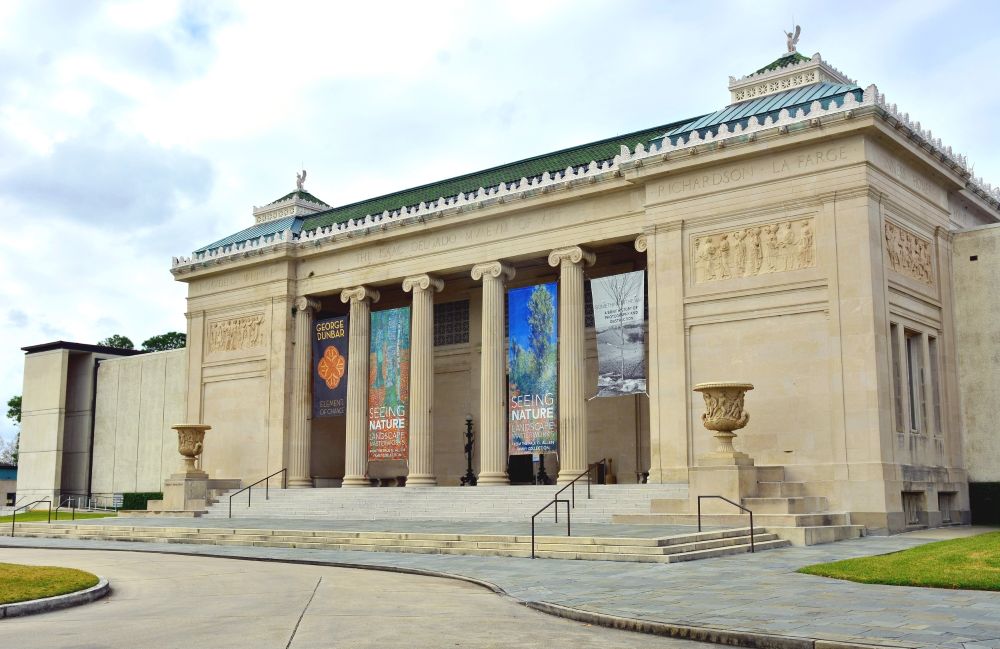
New Orleans Museum of Art
Tucked away in the southern end of City Park, the New Orleans Museum of Art (NOMA) is the city’s oldest fine arts institution, opening 100-plus years ago with only nine works of art. Its permanent collection today consists of more than 40,000 objects and is noted for its strengths in French and American art, photography, glass and African and Japanese works.
“We display exhibitions, installations and large permanent collections spanning over 5,000 years, from ancient times all the way to present day, and art from all around the world,” said Charlie Tatum, director of marketing and communications at NOMA. “NOMA opened in 1911, so we’ve been here for quite a while and are really one of the cornerstone arts institutions in the city and the region.”
There are several flexible spaces inside and outside of the museum offering varying styles, capacities and atmospheres, from intimate boardroom settings to grand open-air gatherings.
“Our boardroom has a capacity of a few dozen people, whereas a larger social gathering in our [Sydney and Walda Bestoff] Sculpture Garden outside can accommodate hundreds and hundreds of people—it’s 12 acres,” Tatum said. “So, we have a lot of different spaces here at the museum that can be really flexible based on the type of event somebody is hosting.”
One area at NOMA in particular that Tatum highlighted is the Lapis Center for the Arts, a flexible, contemporary black box-style space that can accommodate around 125 people seated.
“It can also open up into an interior courtyard that we have, which can be used to accommodate more people for, say, a cocktail reception or something more flexible,” Tatum said. “The Lapis Center is pretty new to the museum, too. It opened in 2020, and we have a lot of opportunities there to either have a screen and a presentation with a stage, a lecture setup. We’ve used it for performances and events with entertainment or music that’s in the middle of the space with chairs surrounding it in a 360-degree setup. There’s so much flexibility in that space.”
NOMA is one of those “hidden gems” within another “hidden gem,” a top attraction in New Orleans City Park, and like City Park, it gives planners the opportunity to provide an experience in the Big Easy that goes beyond the basics.
“Many visitors will come to the city and, particularly for events that are hosted at hotels; many people are really focused on the French Quarter and our Central Business District. When they come to the city, they want to be in that core of the city,” Tatum said. “But they are also becoming really excited to explore and see more. Getting people to move throughout the city is such a special experience, and we can really give guests a sense of being in New Orleans and feeling like they’re coming away with an even richer understanding of the city.”
[Related: New Orleans Is an Authentic Destination Guaranteed to Make Meetings Memorable]
Longue Vue House & Gardens
Located in the Lakewood neighborhood of New Orleans, Longue Vue House & Gardens is an eight-acre estate that was established as a private family residence in 1921 for philanthropists Edgar Stern and Edith Rosenwald Stern.
“Edith was an heir to the Sears, Roebuck fortune and from Chicago, and she moved to New Orleans to marry Edgar,” said Stella Baty Landis, executive director of Longue Vue. “They built this estate both to have plenty of gardens, because that was something she had grown up with—and was a condition of her moving to New Orleans—and also to share.
“They were both very civically engaged. They were both from German-Jewish families and took their Jewish values and responsibilities to the community very seriously,” Landis continued. “And so, it was in the 1930s that they first put in writing that ultimately, Longue Vue should be donated back and be available to everybody in the city. They always saw it as a one-generation private residence. It wasn’t really being stewarded or kept for the next generation of money. That was a really important part of their mission.”
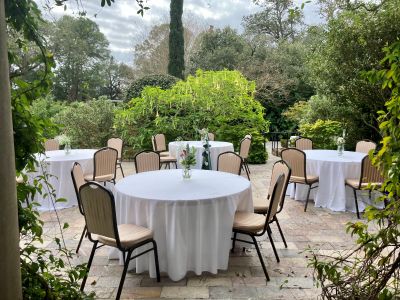
Today, Longue Vue House & Gardens continues to honor the legacy of the Sterns, serving as a nonprofit public garden and historic museum that is sustained through ticket sales and small rentals.
“We never close down for large rentals,” Landis said. “We are always open to the public, in keeping with the reason the family wanted to complete the property. We have daily garden tours and tours of the house, which still contains all of the original furnishings and decorative arts the family had when they lived here. We have educational programs for all ages and wellness programs like yoga in the garden. We work with local artists to put on music in the garden and physical exhibits.
“We’re an exciting, dynamic space that’s really always answering the call to service a larger mission, to serve the community,” Landis said. “Corporate and other private event rentals will always tie back to that mission.”
That mission started in the 1930s, when the Sterns met and partnered with one of the top landscape architects of the day, Ellen Biddle Shipman, who designed all eight acres of the estate and successfully lobbied the Sterns to replace their house with a new house to match her garden.
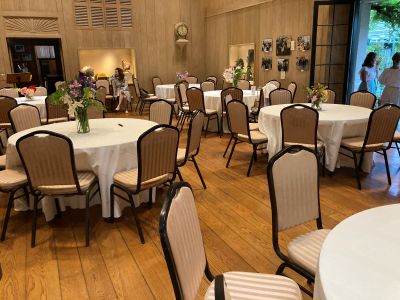
“She was the project manager for that whole new house design and construction. She selected the architect, designed all the interiors of the house. It’s a really fascinating history,” Landis said. “So, we have the civic history, we have the design history and then we have what kind of brings them together: a couple of different spaces that are suitable for groups and were indeed envisioned as spaces for groups to gather.”
“Our Playhouse and our Whim House are our two interior spaces,” said Laren Holzer, director of sales and membership at Longue Vue. “I rent those out quite a bit, and they’re really great for any type of event.”
The team at Longue Vue works to tie their mission into every event held at the property, whether it be through something as simple as including a garden or house tour to personalized activations like hands-on workshops with members of the Longue Vue team.
“Most recently, I had a law firm here for a networking event, and we tied in a private floral workshop with our gardens team,” Holzer said. “So, they rented the space, they included food and beverage to have a cocktail reception, and there was an educational piece to it as well, where they took a quick tour inside the house. Everything was really customized.”
Longue Vue House & Gardens was created with the sole purpose of building community, and private events on the property are guaranteed to do the same.
“It’s something so unique,” Holzer said. “Longue Vue is special. We have so much to offer, and we can really tailor and customize it to your group’s needs. It’s so different than another hotel or conference room. There’s so much history. There’s our mission. It’s educational, beautiful, refreshing. It’s just so different, and that’s what makes us so special.”



